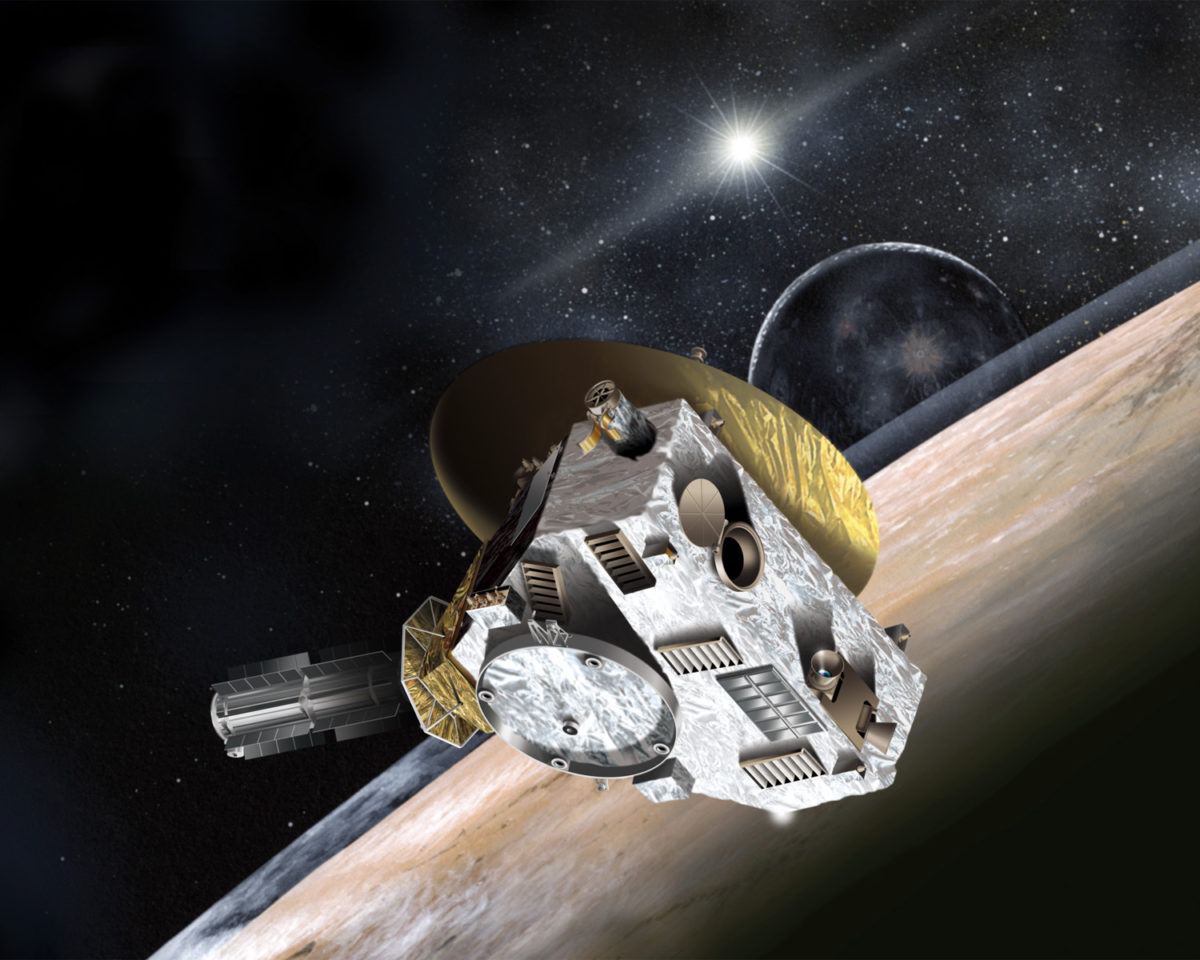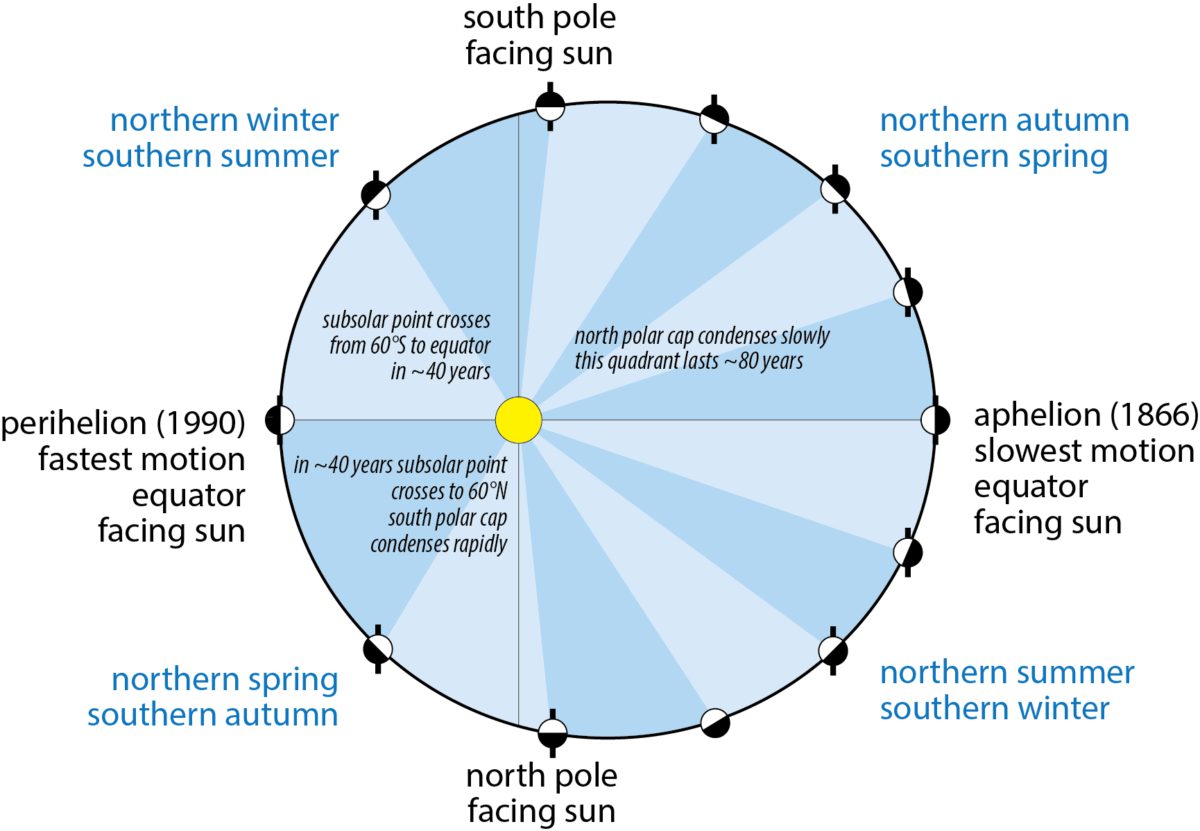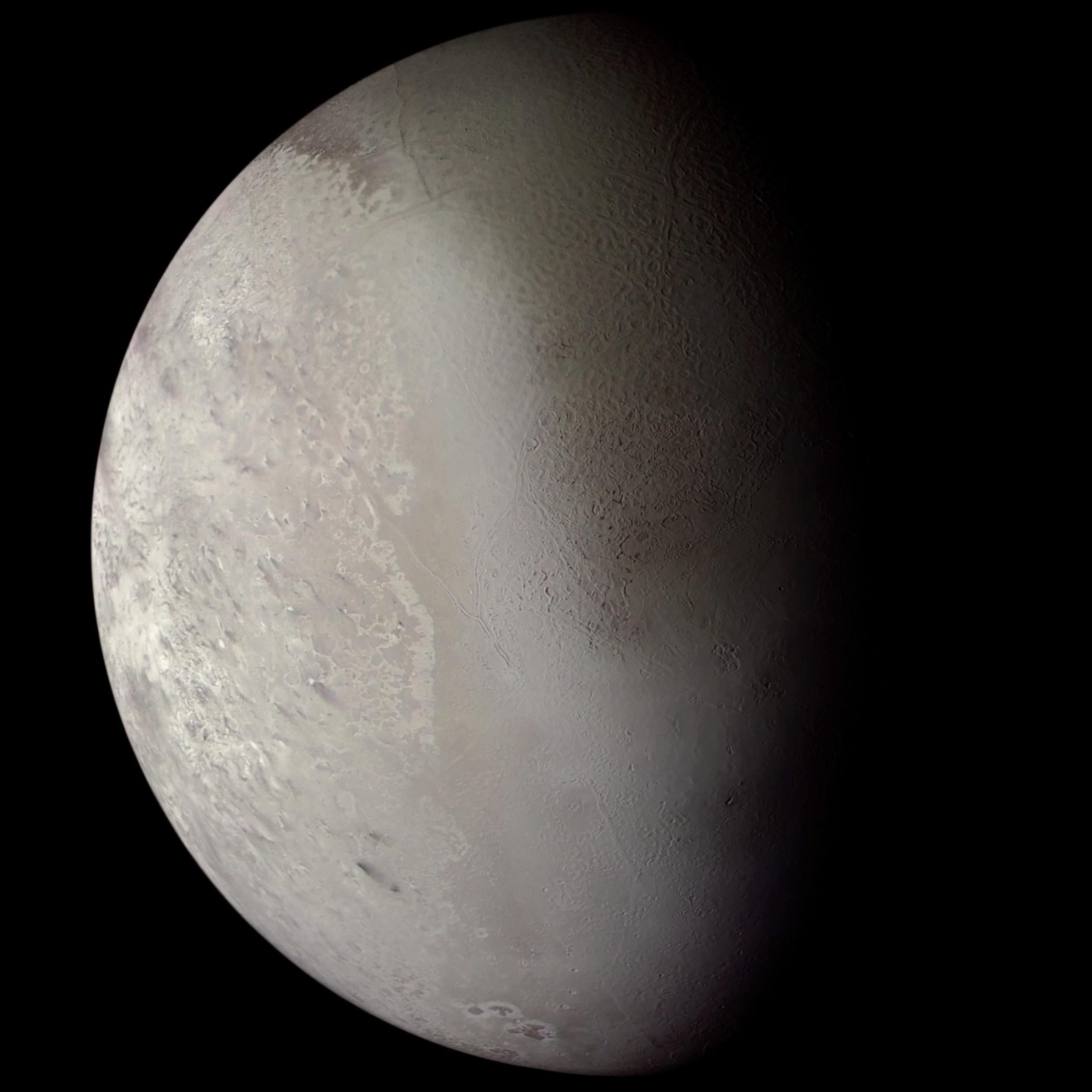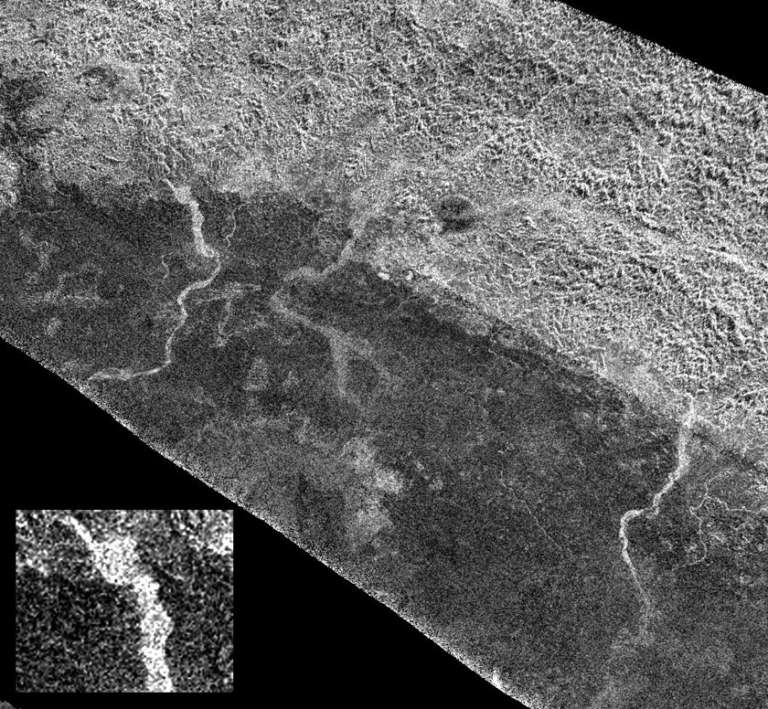Emily Lakdawalla • May 02, 2013
Pluto's seasons and what New Horizons may find when it passes by
We're about a year and a half away from the start of New Horizons' scientific mission at Pluto. Scientists are preparing for the encounter by developing models that make predictions for what New Horizons might see. Once we have the data from New Horizons in hand, scientists will be able to use that to figure out which models made the right predictions, and which didn't. At least that's how we hope it will work! The real world is always messier than our simulations.

One example of a recent paper that's laying out these kinds of predictions is by Leslie Young, recently published in Astrophysical Journal Letters: "Pluto's Seasons: New Predictions for New Horizons." There's an earlier version of the paper posted at arXiv. In a way, this work is similar to Edwin Kite's paper about what happens to water on Mars over the course of climate cycles. For Pluto, the question is: what happens to nitrogen on Pluto over the course of its year? When and where does it freeze out of the air onto the ground?
To establish context: Pluto, like Earth and Titan, has a nitrogen-rich atmosphere. It's a very thin atmosphere, its pressure measured in microbars. Earth's atmospheric pressure is, of course, about one bar. Titan's is 1.6 bars. Mars' is a hundred times more tenuous, less than 10 millibars. Pluto's is about a hundred times more tenuous again, less than 100 microbars. Which is really thin; but it's way thicker than the essentially airless exospheres at Mercury and the Moon. Pluto has plenty enough atmosphere for the world to have wind and weather and clouds, just like Venus and Earth and Mars and Titan.
Nitrogen in Pluto's air is in equilibrium with nitrogen frost or ice on the ground. Broadly speaking, when Pluto warms up, ice sublimates to gas, and the atmospheric pressure goes up. When Pluto cools, you get frost and a lower atmospheric pressure. Changing seasons remove ice from the summer pole, and may re-deposit it at the winter pole.
Pluto's seasons are much more extreme than those of any of the other windy worlds I've mentioned. With an eccentricity of 0.24, it ventures almost twice closer to the Sun at perihelion that at aphelion. (It should be pointed out that Mars' orbit does sometimes get nearly this eccentric, up to about 0.21.) Its rotation axis is highly tilted, about 120 degrees, giving it Uranus-like extreme seasons. (According to this paper, Milankovitch-like cycles of axial tilt variation at Pluto are modest compared to those at Mars; Pluto's axial tilt ranges from 102 to 126 degrees.) Pluto's seasons are aligned with its orbit in such a way that the most recent equinox at Pluto was in 1989, at about the same time that Pluto reached perihelion. The geometry of the orbit means that both hemispheres receive similar amounts of solar energy over the course of the year, but the onset of summer in the northern hemisphere is much more rapid than the onset of summer in the southern hemisphere. Another oddity about this geometry is that, when you add it up over the whole year, any given spot near the pole receives more sunlight than any spot on the equator over a full Pluto year.

So, Leslie set up a computer model that looked at what nitrogen does over the course of several Pluto years. Her model was pretty simple; she looked at which latitudes there was nitrogen frost or ice on the surface given a range of initial conditions of physical properties like albedo (how much sunlight the surface reflects), thermal inertia (how rapidly it warms or cools), and the total amount of nitrogen available. After running the model long enough that it produced the same behavior from one year to the next, she compared the model predictions with the few pieces of observational evidence that we have on the density of Pluto's atmosphere at different times of year from stellar occultations.
The observations are actually a little squishy -- what they tell you about how dense the atmosphere is depends on your choice of model for Pluto's atmosphere. So it wasn't possible to identify the right parameters for her model based upon the observations. Instead, she used those observations as a "sieve" to screen out the model runs that couldn't possibly match any interpretation of the observations. That still left her with a few dozen model runs that could be consistent with the observations.
Leslie argues that the model runs divide into two broad kinds of climate for Pluto. For the model runs in which there was more nitrogen available and for which thermal inertia was high, the north polar cap never completely goes away, even during the height of northern summer. That's because late northern summer happens as Pluto is rapidly receding from the Sun and getting colder. At the same time, the southern polar cap develops during southern winter and spring, but it vanishes again in the southern summer, when Pluto's distance to the Sun is at its shortest.
Leslie saw a different kind of pattern when there was less nitrogen available and thermal inertia was lower. Her model shows the cap migrating from north to south. The southern polar cap vanishes during southern summer, and the northern polar cap vanishes during northern winter. With enough nitrogen, for half the year, there are two polar caps. In the cases with the least nitrogen, though, Pluto spends most of the time with large caps at only one or the other of the poles.

Okay, so what does this mean for New Horizons? It's only been a couple of decades since the equinox and the perihelion. That means Pluto is getting farther from the Sun (cooling) at the same time that the north pole is getting increasingly illuminated by the Sun (so nitrogen frost should be sublimating to gas). The combination of the pole getting sunlit and the world cooling is that nitrogen frost should be moving from the pole to someplace else. Where it's moving depends upon how dense the atmosphere is.
In the case where there's more atmosphere and higher thermal inertia, Leslie says, there will be relatively high surface pressures (greater than 10 microbars), and little or no southern polar cap. The nitrogen that's sublimating from the pole should be condensing at the edge of the northern polar cap, in equatorial-ish regions. "The result may well be similar to that which Voyager saw at Triton, showing an old cap with a collar of new frost."

With less nitrogen available, the frost should be forming in a different place: the south pole. "New Horizons might see an old, summer, northern pole, with just a sliver of the new, southern, winter pole at latitudes poleward of –15°."
In the case with the least nitrogen, there may be no northern polar cap at all -- just a southern one. In fact, in that scenario, pretty much all of Pluto's atmosphere will already have condensed into a southern polar cap by the time New Horizons gets there.
The punch line: depending on how big Pluto's nitrogen budget is, we could see a northern cap; a southern cap; or two caps. We could see anything! New Horizons will see only one of these. Which one, we don't know. If we knew, we wouldn't need to send a spacecraft!
It was interesting to read this paper shortly after reading Edwin Kite's paper. He was talking about scenarios where there's ice on Mars' surface, when Mars' orbit is at its most eccentric and where the equinoxes are aligned with the aphelion and perihelion, his model produced snowmelt underneath Mars' equtorial ice. Could there be nitrogen melt under Pluto's seasonal nitrogen frost? Believe it or not, this has actually been proposed before. I'll end this post with a report I filed from a New Horizons science meeting about two years ago. Will New Horizons find river valleys on Pluto? Wouldn't that just be the coolest thing ever?

Support our core enterprises
Your support powers our mission to explore worlds, find life, and defend Earth. You make all the difference when you make a gift. Give today!
Donate

 Explore Worlds
Explore Worlds Find Life
Find Life Defend Earth
Defend Earth

